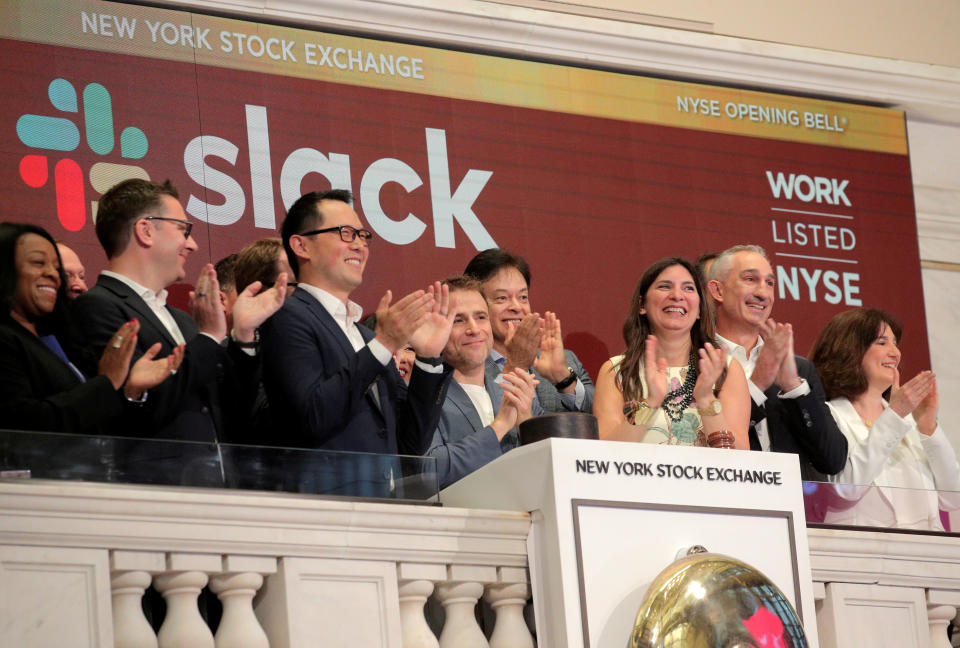Slack had the third largest initial trade in the U.S.
Slack’s (WORK) direct listing landed in the ranks of some of the top-performing public debuts on record, by at least one measure.
The opening trade size for shares of the workplace messaging software company totaled $1.75 billion as investors began snapping up the stock Thursday afternoon. The figure reflects the dollar value of shares trading hands at the stock’s opening price of $38.50, at an opening volume of 45.5 million shares.
This was third only to the opening trade sizes of tech behemoths Alibaba (BABA) and Facebook (FB), according to the New York Stock Exchange (NYSE). The Chinese e-commerce giant had an opening trade size of $4.5 billion when it went public in September 2014, while the latter saw an opening trade size of $3.2 billion in May 2012 in its debut on the Nasdaq.
Unlike Alibaba and Facebook, which debuted via initial public offering (IPO), Slack went public by way of a direct listing – which may have contributed to a larger opening trade volume.
Namely, that’s because direct listings nix the lock-up period required in a typical IPO. With a lock-up, company insiders and certain other stakeholders are barred from selling their shares, typically for between 90 to 180 days after the IPO, as a means of preventing these investors from liquidating assets too quickly.

However, a direct listing involves existing private investors and employees converting their stock to publicly tradeable shares and selling these to the public. This could increase shares available for purchase if a greater number of existing investors choose to cash out larger portions of their stakes.
Spotify (SPOT), the first major company to go public via a direct listing, at the time of its public debut in April 2018 had seen the fifth largest opening trade by dollar value, according to the NYSE.
On other measures, however, Slack’s public listing still pales in comparison to its big tech peers. While Slack’s opening share price gave it a market value north of $20 billion, Facebook had a market value of $104.2 billion after its IPO. Alibaba’s market valuation after its IPO of about $168 billion remains the largest-ever.
Updates with additional Facebook listing information.
—
Emily McCormick is a reporter for Yahoo Finance. Follow her on Twitter: @emily_mcck
Read more from Emily:
Tech companies like Lyft want your money – not ‘your opinion’
Levi Strauss shares jump more than 30% above IPO price at open
Facebook sued by Trump administration for alleged ‘discriminatory’ ad practices
Boeing 737 Max groundings ‘pressure’ U.S. economic data: Wells Fargo
Follow Yahoo Finance on Twitter, Facebook, Instagram, Flipboard, LinkedIn, andreddit.

 Yahoo Finance
Yahoo Finance 